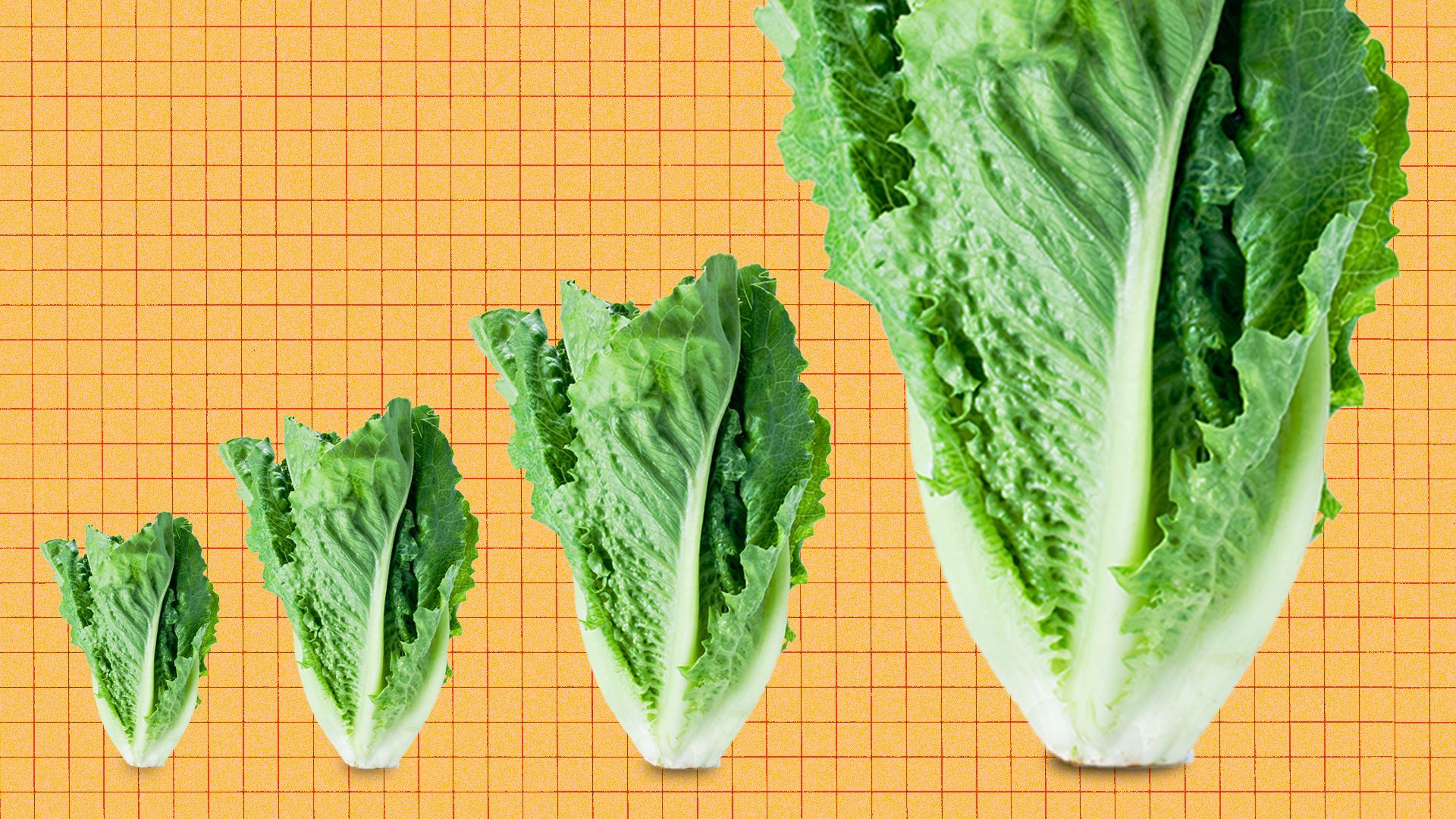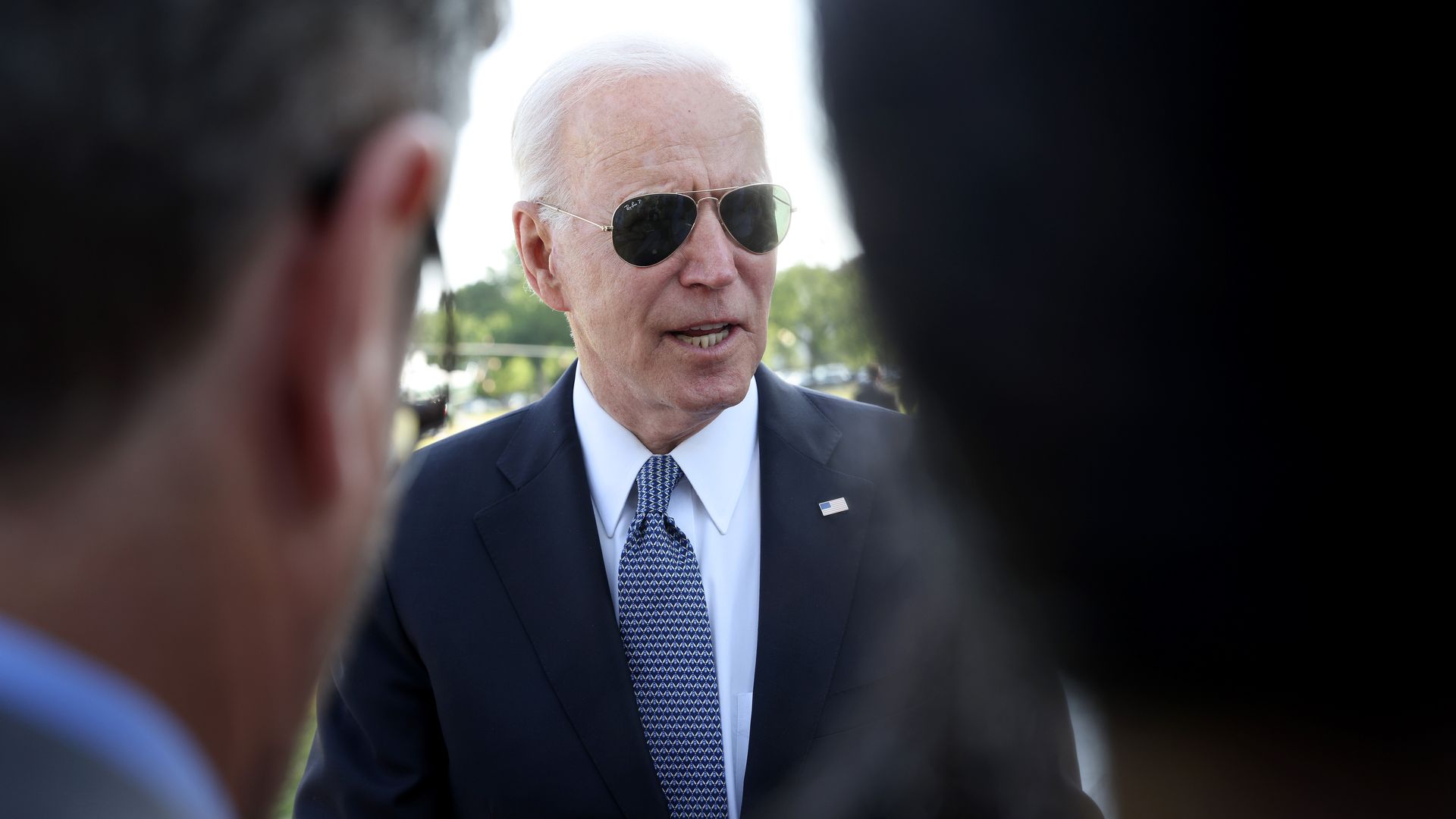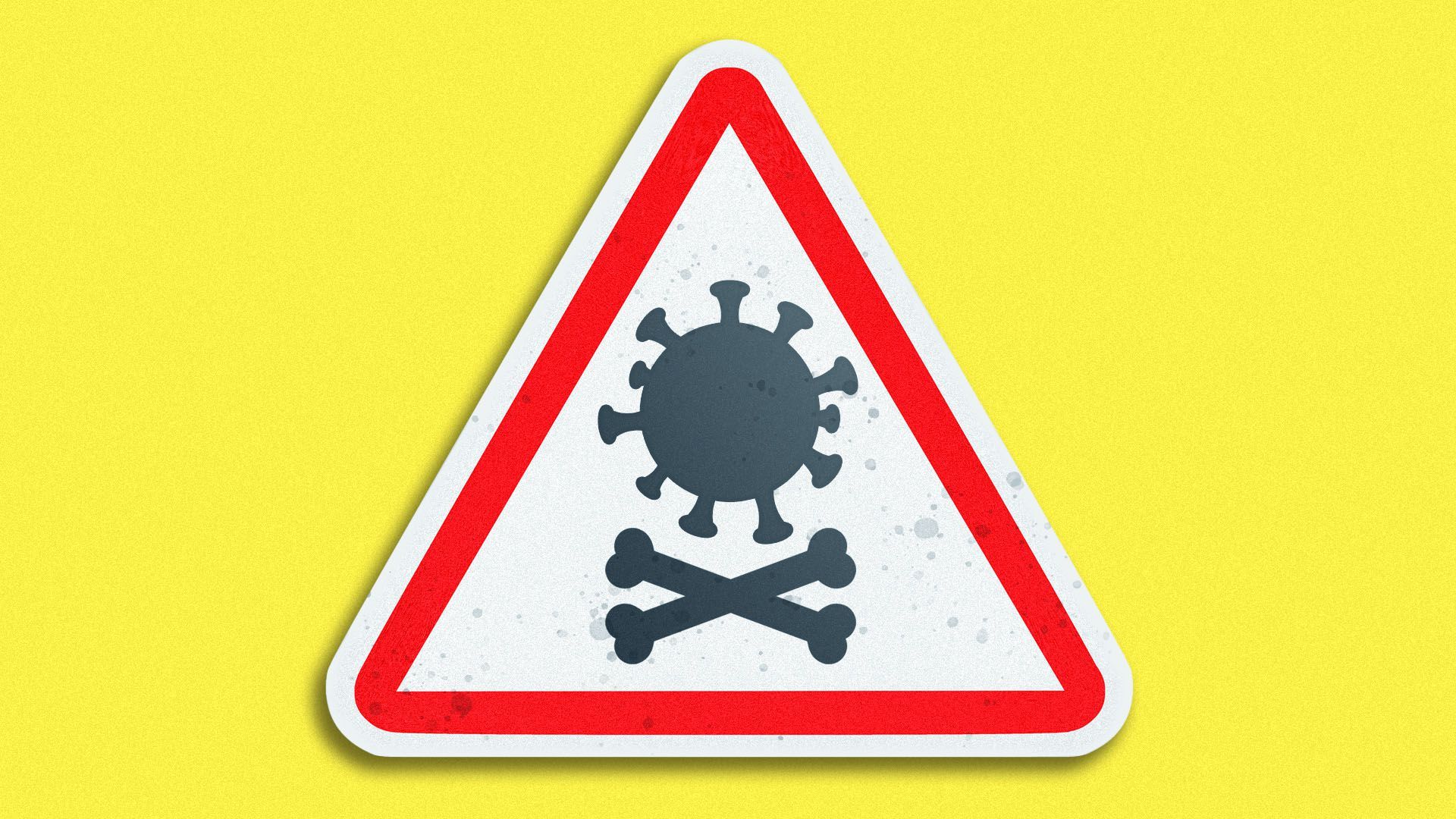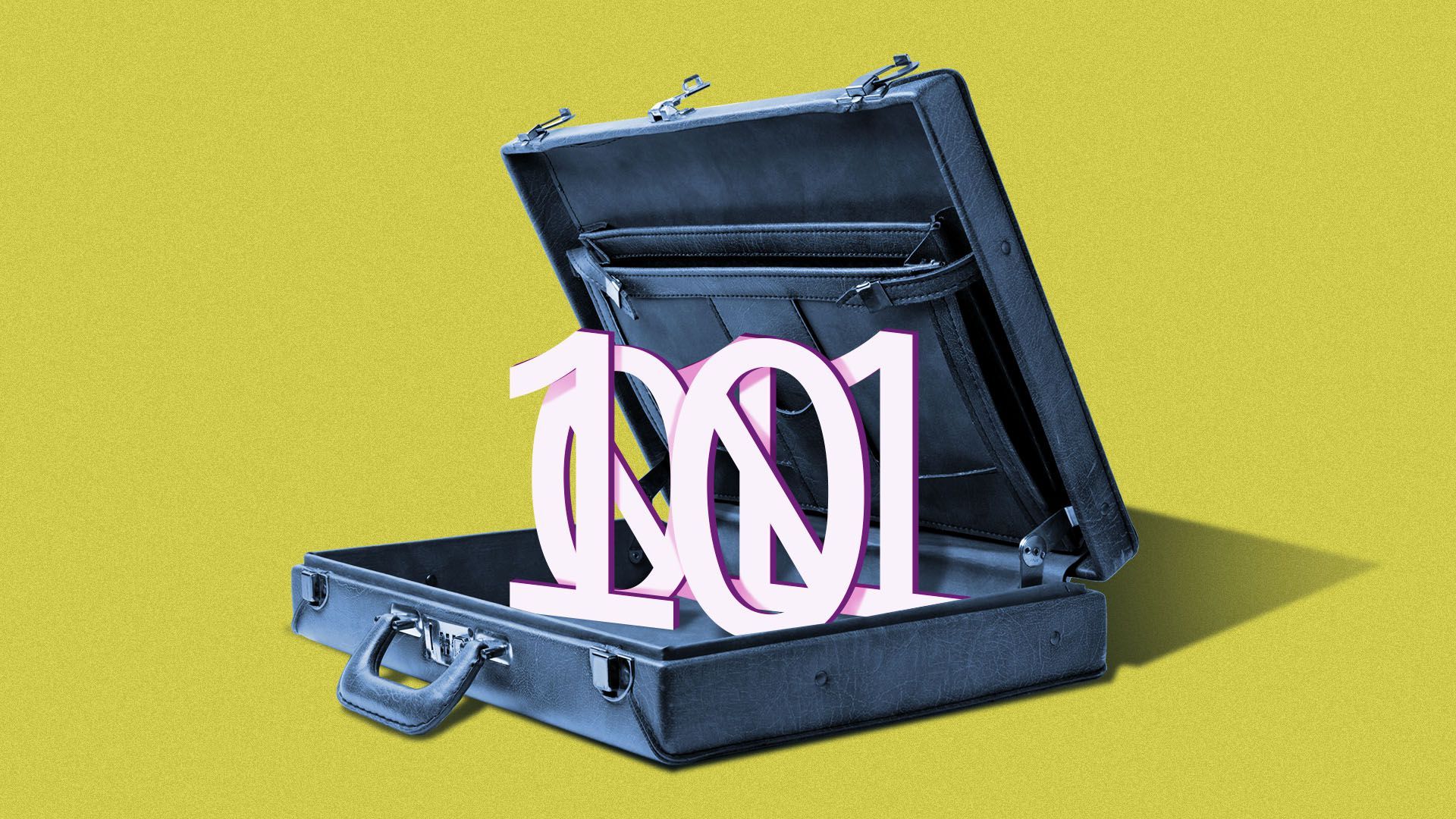| | | | | | | Presented By General Motors | | | | Axios Future | | By Bryan Walsh ·May 26, 2021 | | Welcome to Axios Future, where I can tell it's finally summer in New York because the humidity is once again visible. Today's Smart Brevity count: 1,896 words or about 7 minutes | | | | | | 1 big thing: Indoor vertical farming grows up |  | | | Illustration: Shoshana Gordon/Axios | | | | Indoor vertical farming, where crops are raised in automated stacks, often in or near cities, offers a way to sustainably meet the growing demand for food — if its energy demand can be reduced. Why it matters: With the global population still rising — albeit more slowly — and more people moving to urban areas, the world needs ways to produce more food without clearing land for conventional farms. Driving the news: New York-based vertical farming startup Bowery Farming on Tuesday announced a new $300 million funding round — the largest in the industry's history — that values the company at $2.3 billion. - The deal accelerates the momentum in venture capital funding for vertical farming companies, which hit nearly $1.9 billion globally in 2020, almost tripling investment from the year before.
- "We're going to need 50–70% more food over the next 30 years, according to the UN," says Irving Fain, the CEO and founder of Bowery Farming, which has two commercial vertical farms in New Jersey and Maryland and sells its leafy greens to 850 grocery stores. "Indoor farming is not the only answer to that challenge, but it's part of the solution."
How it works: Indoor vertical farming takes greenhouses to the next level —literally — with crops grown in tower-like walls of plant-holding cells that require no soil. Like an apartment tower versus a suburban tract, that means more food can be grown on a smaller footprint, which is ideal for cities. - Water and nutrients are delivered to crops either aeroponically — via the air through misting — or hydroponically, in which the plants are grown in nutrient-rich water. "You get high density and high output, while using 90% less water" than conventional farming, says Micki Seibel, VP of product at the vertical farming startup Unfold.
- Growing light is delivered via LED lamps. While more expensive than sunlight — which currently remains free — the LED lamps aren't weather-dependent, and like water, nutrients and temperature in the vertical farms, the light can be controlled precisely, vastly enhancing yield and reducing grow times.
- Because vertical farming uses so little space, "we can move the farm to the people rather than the food," says James Woolard, chief marketing officer at Freight Farms, which develops mobile hydroponic freight containers modified for indoor farming.
By the numbers: There are more than 2,000 vertical farms in the U.S. Most are run by small growers with a few bigger players, including Bowery Farming, Newark-based AeroFarms, and Wyoming-based Plenty. The catch: In part because of the price of supplying artificial light, vertical farms have struggled to break even in the past, and they chiefly produce comparatively priced leafy greens rather than the commodity crops that make up the backbone of the food system. What's next: Second-generation vertical farms are taking advantage of efficiency advances in LED technology, as well as automation and sensors that can reduce labor and setup costs and enhance yield. The bottom line: Agriculture made cities possible. Now vertical farming holds out the possibility that cities could become farms themselves. Read the whole story. |     | | | | | | 2. Biden intensifies the investigation into COVID's origins |  | | | President Biden addresses reporters outside the White House on May 25. Photo: Win McNamee/Getty Images | | | | President Biden announced Wednesday he has asked the U.S. intelligence community to "redouble their efforts" to investigate the origins of the coronavirus and provide a report within 90 days that "could bring us closer to a definitive conclusion." Why it matters: Circumstantial evidence of the possibility that COVID-19 originated in a lab accident has been growing in recent days, after the Wall Street Journal cited previously undisclosed U.S. intelligence that three researchers at the Wuhan Institute of Virology fell ill enough to be hospitalized in November 2019. The state of play: Biden said in a statement that the U.S. intelligence community had "coalesced around two likely scenarios" for the origins of the virus — one, that it emerged from human contact with an infected animal, and two, that it was the result of an accidental laboratory leak. What they're saying: Biden said the U.S. intelligence community's current position is that "while two elements in the IC leans toward the former scenario and one leans more toward the latter — each with low or moderate confidence — the majority of elements do not believe there is sufficient information to assess one to be more likely than the other." Between the lines: CNN reported on Tuesday that Biden's team shut down a State Department effort launched late in the Trump administration to prove the coronavirus originated in a Chinese lab because of concerns about the quality of its work. - While the lab-leak theory has gained new credence, we're still far from any kind of smoking-gun evidence.
My thought bubble: The debate over how COVID-19 began has become a political, scientific and even journalistic mess. But identifying the true origins of a new pathogen is difficult even without the geopolitical weight of COVID-19, so expect this argument to remain ongoing for the foreseeable future. Go deeper: The COVID lab-leak theory goes mainstream |     | | | | | | 3. A faster way to track COVID variants |  | | | Illustration: Sarah Grillo/Axios | | | | Clear Labs, a California-based startup that provides rapid genetic sequencing for pathogen surveillance, announced a new $60 million funding round this morning. Why it matters: Clear Labs' whole genome sequencing can identify the unique genetic code of a pathogen within 24 hours, allowing hospitals or public health agencies to track unusual variants in diseases like COVID-19 as well as food safety threats like salmonella. How it works: Whole genome sequencing can provide the full genetic code of an organism, meaning doctors can identify not just what might be causing an illness, but how that virus, bacteria or other pathogen might be mutating. - "Unlike legacy diagnostics, we don't stop at a binary yes or no for a pathogen," says Sasan Amini, co-founder and CEO of Clear Labs. "We collect additional pieces of genetic information so the end user has more insight to take action on an outbreak."
Keep reading |     | | | | | | A message from General Motors | | General Motors' mission is zero-emissions | | |  | | | | By 2040, it is our goal to be carbon neutral and source 100% renewable energy to power our U.S. sites What GM is doing: Which is why we are investing in sustainable processes, flexible platforms and EVs that are accessible to all. Learn more about the initiative. | | | | | | 4. Automation puts a premium on decision-making jobs |  | | | Illustration: Sarah Grillo/Axios | | | | A new paper shows that as automation has reduced the number of rote jobs, it has led to an increase in the proportion and value of occupations that involve decision-making. Why it matters: Automation and AI will shape the labor market, putting a premium — at least for now — on workers who can make decisions on the fly, while eroding the value of routine jobs. By the numbers: David Deming, a political economist at the Harvard Kennedy School, analyzed labor data over the past half-century and found that the share of all U.S. jobs requiring decision-making rose from 6% in 1960 to 34% in 2018, with nearly half the increase occurring since 2007. - Partially as a result, a greater share of wages is going to management and management-related occupations, more than doubling since 1960 to 32% — a trend that is more pronounced in high-growth industries.
Details: This shift has also reinforced generational disparity in the labor market. - Getting better at making decisions requires experience, and experience requires time on the job.
- Largely as a result, career earnings growth in the U.S. more than doubled between 1960 and 2017, and the age of peak earnings increased from the late 30s to the mid-50s.
Between the lines: As automation and AI take up more of the decision-making in jobs like trucking and warehouse logistics, workers in those occupations won't get the chance to build up the cognitive skills employers increasingly value. What they're saying: "One implication is that AI leads to lots of angry, frustrated, left-wing young people, and a cementing in of the gerontocracy," economist Tyler Cowen commented in a blog post. The bottom line: In the current economy, what you know matters less than how adept you are at learning — at least until AI learns how to do that, too. |     | | | | | | 5. How immigration can power the future of America's heartland |  Data: Heartland Forward; Chart: Danielle Alberti/Axios More foreign-born immigrants are moving to the center of the U.S. than in the past, according to a new report by Heartland Forward, my Axios Local colleagues Worth Sparkman and Linh Ta write Why it matters: With population growth in the U.S. slower than it has been for the last 100 years, both high-skilled and low-skilled industries across America have come to rely more on immigrants to power their workforces. - Many states' populations would be shrinking if not for immigrants, the New York Times reported last year.
- Immigrants' children typically achieve significant upward mobility. A 2016 population survey showed 38% of second-generation immigrants completed college, compared to 32% of first-generation immigrants and 33% of native-born Americans.
The big picture: The report's findings counter perceptions that immigrants tend to settle on the coasts "because they're not welcome" in the middle of the country, Ross DeVol, president and CEO of Heartland Forward, told Axios. - Heartland Forward is a Bentonville, Arkansas, think tank focused on improving economic performance in the 20-state region it calls the "heartland."
By the numbers: The report found the overall foreign-born population who live in that 20-state region has risen from 23.5% in 2010 to 31% in 2019. Keep reading |     | | | | | | 6. Worthy of your time | | What robots can — and can't — do for the old and lonely (Katie Engelhart — The New Yorker) - Social isolation is a major problem for the growing number of elderly, but robot companions may be little more than a Band-Aid.
Destiny and divination: Online fortunetelling booming among young people in Hong Kong (Salina Li and Adela Suliman — NBC) - Ancient folk wisdom meets modern social media.
The history of ethical AI at Google (Blake Lemoine — Medium) - A Google researcher tells the inside story of the internal tensions that wrecked the company's ethical AI team.
How the "culture war" could break democracy (Zack Stanton — Politico) - Politics has gone from a realm where we might settle cultural conflicts to the battlefield where they're fought — and that poses an existential risk to democracy.
|     | | | | | | 7. 1 apocalypse thing: Existential risk 101 |  | | | Illustration: Aïda Amer/Axios | | | | A class being taught at the University of Chicago this semester is trying to answer a pressing question: "Are We Doomed?" The big picture: If you wake up wondering if you're living through the end times, you're not alone. But we're not doomed yet, and learning about the existential threats we face is the first step to taking action. What's happening: Taught by astrophysicist Daniel Holz and sociologist James Evans, the class tackles human-made existential risks on a week-by-week basis, from nuclear war to climate change and pandemics to superintelligent AI. - The media studied in the class range from UN climate change reports to Afrofuturist manifestos to the nuclear satire "Dr. Stangelove."
What they're saying: Holz is involved with the Bulletin of the Atomic Scientists' annual Doomsday Clock, which tracks how closely the world supposedly is to the apocalypse, and he says he wanted to teach the class "to understand why we aren't doing more about this, and what can be done right." What's next: Ever-increasing chances of doom. - With the development of nuclear weapons in 1945, humanity suddenly had the plausible ability to end itself through its own actions.
- Since then, the nuclear threat has been joined by climate change, while AI and biotechnology are generating growing levels of risk as both fields continue to develop.
- Cosmologist Martin Rees gives humanity a 50-50 chance of surviving the century intact.
Yes, but: "You can get people to stand up and say, 'I'm going to do something, even though it really is for the longer term,'" says Holz. "And that gives me hope." The bottom line: If this subject piques your interest but you're not currently enrolled in the University of Chicago, I may have written the book for you. |     | | | | | | A message from General Motors | | General Motors' mission is zero-emissions | | |  | | | | By 2040, it is our goal to be carbon neutral and source 100% renewable energy to power our U.S. sites What GM is doing: Which is why we are investing in sustainable processes, flexible platforms and EVs that are accessible to all. Learn more about the initiative. | | | | | | Axios thanks our partners for supporting our newsletters.
Sponsorship has no influence on editorial content. Axios, 3100 Clarendon Blvd, Suite 1300, Arlington VA 22201 | | | You received this email because you signed up for newsletters from Axios.
Change your preferences or unsubscribe here. | | | Was this email forwarded to you?
Sign up now to get Axios in your inbox. | | | | Follow Axios on social media:    | | | | | |
No comments:
Post a Comment